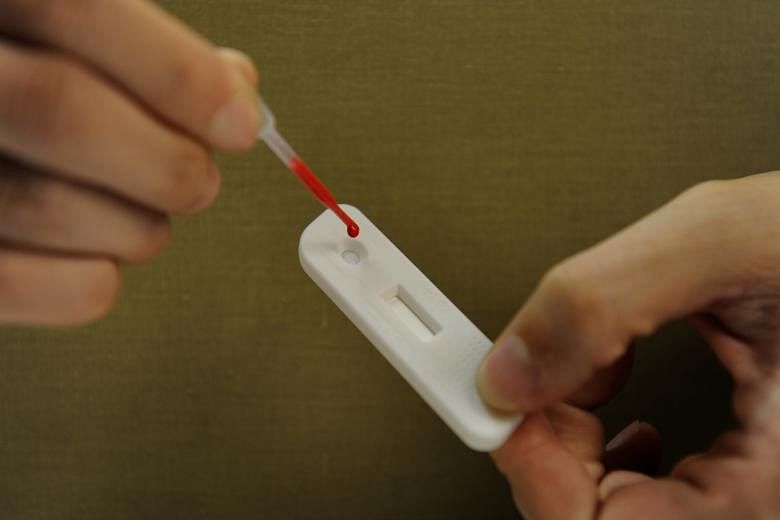SINGAPORE - Fewer people were diagnosed with HIV/Aids in Singapore from January to October this year, with a 10 per cent drop from the same period last year.
This continues a downward trend from the peak of 469 people who were diagnosed in 2012.
The Ministry of Health (MOH) provided updated figures on Wednesday (Dec 1), in conjunction with World Aids Day.
The fall in cases this year "could be related to the impact of the Covid-19 pandemic since early 2020", MOH said in its statement, without elaborating.
It urged individuals at risk of HIV infection, such as those who engage in casual or commercial sex, to go for regular tests, as early diagnosis can facilitate early treatment and care.
Out of the 119 cases reported in the first six months of this year, 93 per cent were male. Nearly half of the cases were patients aged between 20 and 39, and a third were aged 40 to 59.
The main mode of transmission was through sexual intercourse, accounting for 94 per cent of the 119 cases, said MOH.
Homosexual transmission was the mode of transmission for 55 per cent of all cases, it said, while 35 per cent were from heterosexual transmission and 4 per cent from bisexual transmission.
Other forms of transmission include intravenous drug use and through blood transfusion, although such cases were very rare.
More than half of the newly reported cases, or 57 per cent, were detected during the course of medical care and typically in the late stages of HIV infection, said MOH.
About a fifth of newly reported cases were detected through self-initiated HIV screening. As these tend to be in the earlier stages of HIV infection, they are more likely to offer a good prognosis for the patient, said MOH.
Just 15 per cent of cases were detected through routine HIV screening.
Deputy director of the National HIV programme at the National Centre for Infectious Diseases, Dr Wong Chen Seong, said the pandemic could have affected HIV statistics in a few ways.
Covid-19 restrictions meant that there were fewer opportunities for people to meet, and hence sexual activities and the sexual transmission of HIV were reduced, he said.
People could have visited HIV testing services less, due to movement restrictions in the earlier part of the year, he added. But he noted that access to these services were not limited as they were considered essential medical services.
Dr Wong also attributed the decline in cases to ongoing efforts to reduce HIV transmission. These include the wide reach of highly active anti-retroviral therapy for those living with HIV.
Such therapy allows them to achieve an undetectable viral load, greatly reducing the risk of HIV transmission to their sexual partners.
The continued success of prevention messaging and campaigns and the use of other prevention strategies, such as HIV pre-exposure prophylaxis, also played a part, he added.
MOH said that other than facilitating early treatment, regular testing and early diagnosis also provides an opportunity for infected persons to protect their partners from infection.
"HIV-positive individuals who are on treatment and have an undetectable viral load have practically no risk of transmitting the virus to their sexual partners."
MOH added that the most effective way to prevent HIV infection is to avoid engaging in high-risk sexual behaviour such as having multiple sexual partners or having sex commercially.
It also strongly advises that individuals use condoms to reduce the risk of HIV infections and other sexually transmitted infections.
Members of the public can visit the HealthHub website for more information on HIV prevention.


